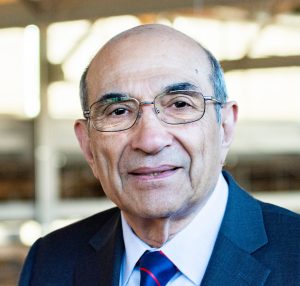Collapse Analyses of the World Trade Center Towers Following 9/11

The collapse of the World Trade Center (WTC) towers in New York City on 11 September 2001 was an unprecedented event in U.S. history. Following the terrorist attack, the National Institute of Standards and Technology (NIST) conducted an extensive investigation of the collapse. They retained Simpson Gumpertz & Heger (SGH) and Applied Research Associates (ARA) to develop computer simulations of the structural response of WTC-1 and WTC-2 to aircraft impact and subsequent fires, and of WTC-7 to damage from falling debris from the WTC-1 failure and the resulting fires. The study found that the tower collapses were caused by the combined effects of aircraft impact damage to the structure and its fireproofing, and the subsequent fires.
In this hybrid webinar event, we will hear from the principal investigator of this collapse initiation analysis. Through a series of pre-recorded videos and animations, as well as live questions and answers, SGH’s Mehdi Zarghamee will describe the WTC collapse, discuss the NIST study and approach, and share the results of these efforts. This project posed enormous challenges that stretched the limits of computational modeling and analytics at the time. The project team had to invent new analytical methodologies that extended the existing computer program’s capabilities to meet the analysis of progressive failures of structures leading to total collapse. In the end, this work advanced the state of the art in the industry and formed the basis of a new act by Congress, as well as revisions to many codes and standards that govern the design of tall buildings in the United States and abroad.
LEARNING OBJECTIVES
After attending this webinar, participants will be able to:
- Understand how and why the WTC towers collapsed following the events of 9/11.
- Recognize the NIST team’s extensive investigation efforts to determine the root cause of the collapse of the WTC towers.
- Identify the computational efforts required to simulate the progressive failures resulting from the structural response to aircraft impact and subsequent fires.
- Discuss the outcomes of this project, including developing advanced computational methods and the impact of the study on our profession.
Participants will earn 1.5 AIA CES Learning Unit (LU/HSW) for attending the live webinar. Registration is free. Please note that space is limited – email events@sgh.com to join our waitlist if the session is closed when you register.
